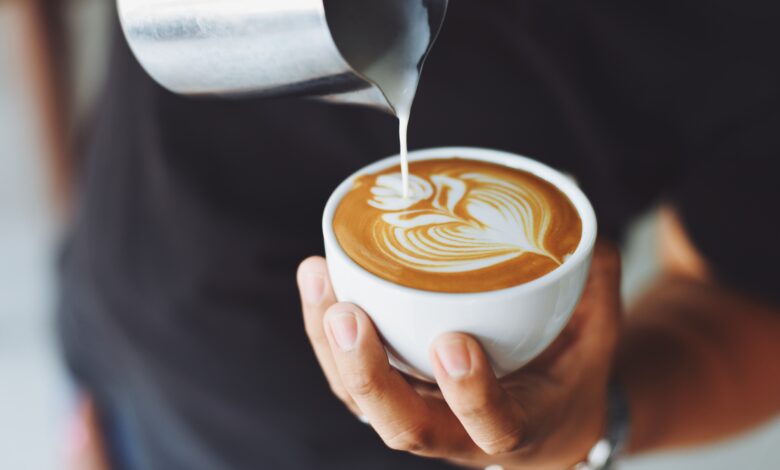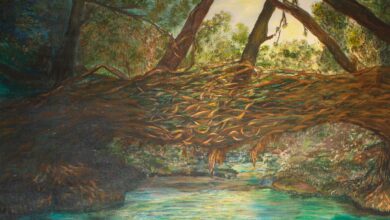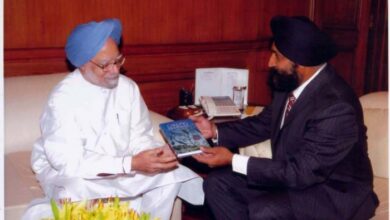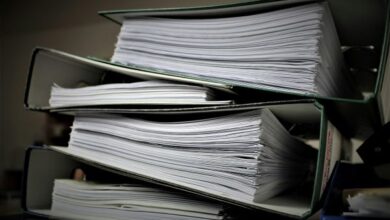The cappuccino story: How coffee travelled round the world

 About a decade ago, my wife and I were on a group tour to Europe with one of the famous tour operators of India. Before entering Italy, we were touring Austria. One bright morning, our coach rolled on the highway from Engelberg, Switzerland.
About a decade ago, my wife and I were on a group tour to Europe with one of the famous tour operators of India. Before entering Italy, we were touring Austria. One bright morning, our coach rolled on the highway from Engelberg, Switzerland.
One of the major attractions of our itinerary before reaching Innsbruck, Austria, was a visit to the famous Swarovski Crystal World at Watten.
The location of the Crystal World was superb, just below the lush green Alpine meadow of the Austrian Alps. The tour manager granted us two hours to venture into the museum. A good friend and co-tourist, Mr Mittal, wanted to have a taste of cappuccino. He was accompanied by his wife. So, we moved on to a quiet corner of a restaurant inside the crystal world. We had a hectic tour schedule throughout. Suddenly, Mr.Mittal asked me, “Duttaji ye coffee kahan se aya India me.”
It is an intriguing query and needs an explanation. According to history, the mention of coffee could be traced back to the Ethiopian Plateau, where according to a legend around 800 A.D. goat herder Kaldi first discovered the quality of this amazing beverage. According to a legend, one day Kaldi from Kaffa was herding his goats on a highland near a monastery in Abyssinia. He observed some strange behaviour among the herd. Goats were jumping and dancing near some shrubs. Coming closer Kaldi found some red coloured berry bearing bushes. He thought the herd might have consumed some of these fruits. He decided to try some of these berries himself. He consumed some, and to his utter surprise, he found the energising effect of the berries.

He collected some and rushed back home and showed his wife the gift from heaven. She told him to go to the monastery and share the beans with the monks. At the monastery, he was not greeted properly. One of the monks told him that the beans are the “devil’s work”. The monk threw the beans into the fire.
From the highlands of Ethiopia, coffee found its way into Yemen by Somali merchants. Of the two varieties of coffee, coffee arabica noted for its flavour is believed to be the first species of coffee to be cultivated. It comes mainly from the mountains of Ethiopia, Kenya and Yemen. Though most agree that coffee plants originated in Ethiopia it was in Yemen where coffee was first used as a beverage. It was the sufi monks of Yemen who were the first to use the beans as a beverage in 1450.
On the other hand, coffee robusta, a more resistant variety is said to have originated in Central and Western parts of Sub- Saharan Africa. Coffee Robusta is known for its bold flavour.
With the coming of the Portuguese, Brazil was discovered in 1500 when the Portuguese explorer Pedro Alvarez Cabral, who was on his way to India arrived at the New World that would become Brazil. It is believed that the coffee seeds were smuggled into Brazil in 1727 from French Guiana, now Guyane, by one Portuguese, Lt. Colonel Fransisco del Melo Palheta. There is a story related to the smuggling of coffee seeds from French Guiana. The French Governor was not willing to trade with the coffee seeds. Colonel Pelheta sought the flavour and help of the Governor’s wife in smuggling the seeds across the border. Rest was all part of history. Today, Brazil is the largest producer of coffee in the world.
The story of the introduction of coffee in India is indeed interesting. Long before the East India Company arrived in India, sufi saint Baba Budan was on a pilgrimage to Mecca. It is believed that while returning home he brought back, rather smuggled, seven beans from the port of Mocha, Yemen, hiding in his beard. Later, the seeds were planted in the hills of Chikmagalur, Karnataka, in 1670.
Throughout our stay in Europe, be it in London, Paris, Brussels, Amsterdam or Rome, the coffee we tasted every morning was very bitter and strong. Sipping the Cappuccino — which is soft espresso-based coffee prepared with steamed milk foam — in the Swarovski Crystal World, we really enjoyed the drink.
Also read:




